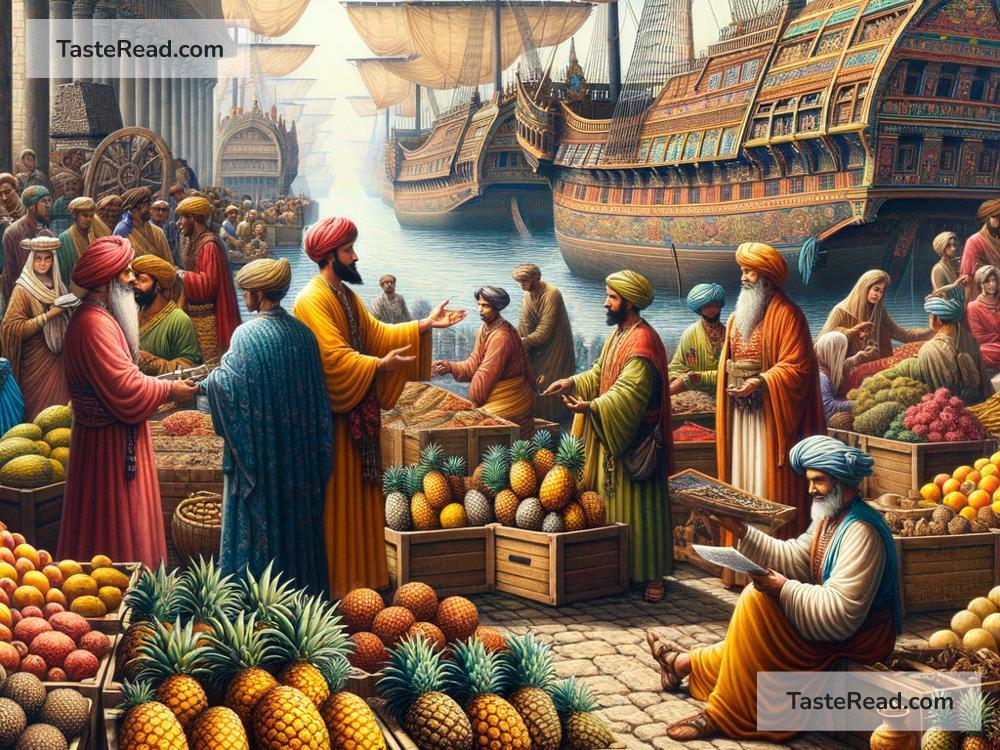The Surprising Story of Pineapples in Ancient Trade
When you think of pineapples today, you probably picture tropical beaches or refreshing juice on a sunny day. It’s hard to imagine a world where pineapples were rare treasures, prized by royalty and traded like gold. But the history of this fascinating fruit is full of surprises, and its journey across the world tells a vivid tale of trade, exploration, and human curiosity.
What is a Pineapple?
A pineapple is a tropical fruit native to South America, particularly the region around modern-day Brazil and Paraguay. Its sweet, juicy taste and spiky appearance make it instantly recognizable. The name “pineapple” comes from English settlers who thought it looked like a pinecone. But there’s more to this fruit than just its shape—its story is one of adventure and global connection.
The Pineapple’s Roots in Ancient Cultures
The pineapple was first cultivated by the Guaraní people of South America, who called it “nana,” meaning “excellent fruit.” Long before Europeans arrived, the fruit was grown and enjoyed in many tropical regions, spreading through trade among indigenous peoples from South America to Central America and the Caribbean islands. For these early cultures, the pineapple was not just food; it symbolized hospitality and friendship, which still influences how we use pineapples as a symbol today.
The Pineapple Meets the World
In 1493, the famous explorer Christopher Columbus came across pineapples during his second voyage to the Caribbean. He tasted the fruit and was amazed by its flavor. Columbus brought pineapple plants back to Europe, introducing the fruit to a completely new audience. Unlike bananas or oranges, which were easier to transport, pineapples were difficult to grow outside their native tropical climates. This made them rare and incredibly valuable.
Pineapples quickly became a luxury item in Europe, reserved for wealthy aristocrats and royals. The fruit was so expensive that most people couldn’t afford to taste it, let alone grow it.
Pineapples Become a Status Symbol
During the 16th and 17th centuries, pineapples continued to be symbols of wealth and prestige. People didn’t just eat them—they displayed them! Owning or presenting a pineapple at a gathering was a way to show off your wealth and sophistication. In fact, some hosts would rent pineapples for special events because buying one was far too costly.
The pineapple’s rise as a status symbol reached its peak during the reign of King Charles II of England. He was famously painted holding a pineapple, a clear sign of his global reach and power. Pineapples were so admired in Europe that they even influenced architecture. You’ll find pineapple designs in old buildings, gardens, and sculptures, often representing prosperity or warm hospitality.
Pineapples in Global Trade
The fruit’s rarity and high demand kicked off a wave of experimentation to grow pineapples outside their natural habitats. Portugal, Spain, and the Netherlands tried to cultivate the fruit in greenhouses, but growing pineapples was difficult and expensive. The tropical conditions they needed were hard to replicate in Europe. Meanwhile, trading ships brought more pineapples over from the Americas, fueling global fascination.
However, over time, settlers in tropical colonies realized they could grow pineapples more easily in their own areas. As trade routes expanded, places like Hawaii, the Philippines, and the Caribbean became key suppliers of pineapples to Europe, Asia, and the Americas. In colonial markets, pineapples often symbolized exploration, connection, and the blending of different cultures.
The Pineapple in Modern Times
With the invention of new farming methods and transportation techniques, pineapples became more accessible in the 19th and 20th centuries. Canned pineapple was introduced, helping the fruit travel longer distances while staying fresh. By the late 20th century, pineapples were no longer an exotic rarity but an everyday fruit available almost anywhere.
Today, pineapples are grown in many countries, including Costa Rica, Thailand, and the Philippines. They are a staple in many cuisines and used in everything from desserts to savory dishes. But despite their widespread availability now, their unique story of trade reminds us how something as simple as a fruit can connect different parts of the world.
The Legacy of the Pineapple
The story of pineapples is more than just a history of trade; it’s a tale of human ingenuity and the desire to explore and share. This tropical fruit traveled thousands of miles, crossed continents, and became a symbol of welcome, luxury, and global exploration. It reminds us of how ancient cultures and trade routes forged global connections long before the internet or airplanes.
Next time you enjoy a pineapple, take a moment to think about its journey from the tropical forests of South America to your plate. From humble beginnings as a native fruit to a prized treasure of royals, the pineapple’s story is a taste of history that continues to inspire and connect people across the globe.


